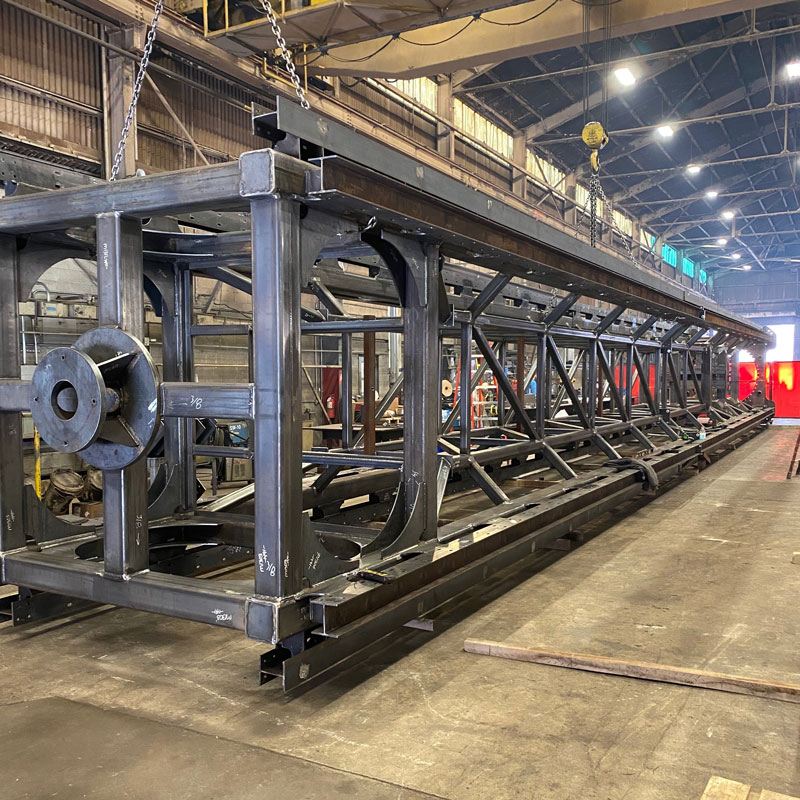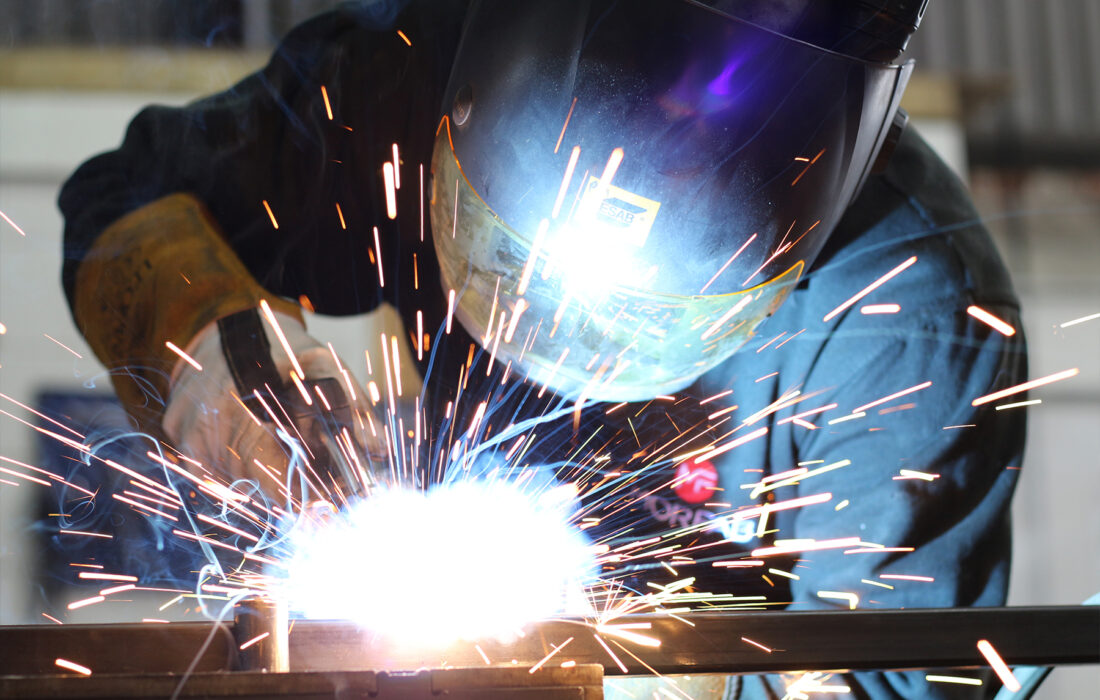Comprehensive Analysis of Cutting-Edge Techniques in Steel Construction Industry
As the steel manufacture market remains to evolve, the integration of sophisticated methods has come to be necessary for staying affordable and satisfying the demands of modern-day manufacturing standards. From laser reducing developments to the utilization of robotics and 3D printing in steel production, the landscape of fabrication methods is rapidly altering. With each development bringing its very own set of obstacles and benefits, a thorough analysis of these strategies is vital for companies aiming to improve their processes, improve accuracy, and eventually, boost the quality of their steel manufacture result. In this vibrant market where technology plays a pivotal function, recognizing the nuances of these innovative strategies is not just a choice yet a need for those wanting to build ahead in the ever-evolving world of steel construction.
Laser Cutting Innovations
In the realm of steel fabrication, laser cutting advancements have transformed the precision and efficiency of metal shaping procedures. By harnessing the power of focused laser beams, manufacturers can currently attain unrivaled levels of accuracy when puncturing different sorts of metals. This technology enables intricate layouts to be implemented with marginal material wastage, making it an affordable service for industries requiring high accuracy elements.
One of the essential benefits of laser cutting is its capacity to manage a wide variety of materials, consisting of stainless-steel, aluminum, and carbon steel, easily. The procedure produces tidy, burr-free edges, eliminating the demand for extra finishing actions. The non-contact nature of laser cutting lowers the danger of material contamination, resulting in greater quality end products.
Moreover, laser reducing devices can be set to make swift, accurate cuts, significantly lowering production time compared to typical cutting methods. This rate and accuracy make laser cutting particularly appropriate for mass production settings where efficiency is vital. As technology remains to advance, laser cutting is poised to play an increasingly essential function in the steel manufacture sector.

CNC Machining Innovations
The evolution of CNC machining innovations has actually introduced a brand-new era of precision and effectiveness in the steel fabrication market. Computer Numerical Control (CNC) makers have transformed steel construction by supplying unrivaled accuracy and repeatability in the manufacturing process. steel fabrication melbourne. Among the key developments in CNC machining is the combination of sophisticated software program systems that make it possible for real-time surveillance and changes, bring about enhanced productivity and quality control
Additionally, the development of multi-axis CNC devices has allowed for the fabrication of complex steel elements with complex layouts that were previously challenging to produce. These machines can perform a large range of machining procedures, including milling, drilling, transforming, and grinding, all with high degrees of accuracy.
Additionally, the consolidation of automation and robotics in CNC machining has streamlined production procedures, minimized preparations, and lessened the margin of error. This integration of cutting-edge modern technologies not just increases efficiency yet additionally makes sure constant quality throughout all produced steel parts. To conclude, CNC machining technologies remain to drive developments in the steel fabrication sector, establishing new criteria for accuracy and productivity.
Automated Welding Technologies
Automated welding technologies have actually transformed the steel manufacture market, enhancing performance and accuracy in the welding procedure. These advanced technologies use computer-controlled systems to automate the welding process, causing higher performance levels and enhanced weld quality. One of the key benefits of automated welding is the capacity to carry out intricate welds with constant precision, decreasing the probability of mistakes and remodel.
Robot welding systems are at the center of automated welding technologies, supplying unequaled speed and precision. These systems can handle a variety of welding tasks, from straightforward to elaborate, effortlessly (Alpha reo). By using innovative sensing units and software program, robotic welders can adapt to variations in product and joint geometry, making certain an uniform and trustworthy weld
In addition, automated welding technologies enhance office safety by reducing the direct exposure of human welders to unsafe fumes and extreme heat. As the steel fabrication industry remains to progress, incorporating automated welding see this here innovations will be vital for business aiming to remain affordable and fulfill the expanding needs for top quality welded products.
Robotics Integration in Fabrication
Utilizing robotic systems in fabrication processes has become an essential approach for boosting performance and accuracy in contemporary production atmospheres. Robotics combination in steel construction provides a myriad of benefits, including enhanced productivity, improved quality assurance, and boosted precaution. These sophisticated robotic systems are geared up with sophisticated sensors and shows capacities, enabling them to carry out intricate jobs with a high level of accuracy and repeatability.
One of the vital benefits of robotics combination in steel construction is the ability to automate recurring tasks, such as material handling, reducing, welding, and setting up processes. This not just speeds up manufacturing cycles yet also lowers the risk of human error, bring about higher general product high quality. Furthermore, robots can operate 24/7, dramatically enhancing production result and meeting limited job deadlines.

3D Printing in Steel Production
Having actually revolutionized the steel construction sector via robotics integration, the blossoming expedition of 3D printing in steel production is poised to further development the world of modern production strategies. 3D printing, also referred to as additive manufacturing, supplies unprecedented design flexibility and intricacy, making it possible for the production of intricate steel structures that were previously unattainable with standard manufacturing approaches. By making use of computer-aided layout (CAD) software, producers can exactly manage the layer-by-layer deposition of steel material, leading to get rid of improved capabilities and geometries.
Among the vital benefits of 3D printing in steel production is its capacity to lower product waste substantially. Unlike subtractive production procedures where excess product is cut away, 3D printing just uses the necessary quantity of steel needed for the final part. This performance not just causes cost savings but additionally straightens with sustainable manufacturing practices by reducing environmental influence.
Additionally, 3D printing allows fast prototyping and personalization, enabling the production of small sets of intricate steel elements with short preparations. As the modern technology proceeds to develop and come to be a lot more easily accessible, its combination into mainstream steel manufacture procedures is expected to drive technology and effectiveness across the sector.
Verdict
In conclusion, the steel construction market has actually seen substantial advancements in techniques such as laser cutting, CNC machining, automated welding, robotics integration, and 3D printing. These innovative technologies have reinvented the method steel items are made, bring about raised cost-effectiveness, precision, and efficiency. Proceeded financial investment in these cutting-edge strategies is critical for the sector to stay competitive and meet the needs of modern-day production processes.
As the steel construction industry continues to advance, the assimilation of innovative techniques has actually come to be necessary for remaining competitive and meeting the needs of contemporary manufacturing standards.One of the vital benefits of laser cutting is its ability to deal with a vast range of products, consisting of stainless steel, aluminum, and carbon steel, with ease.Automated welding modern technologies have revolutionized the steel manufacture sector, enhancing performance and accuracy in the welding process.Having actually transformed the steel fabrication sector through robotics assimilation, the blossoming exploration of 3D printing anonymous in steel production is positioned to additional advancement the world of contemporary production methods.In conclusion, the steel construction industry has seen useful reference significant innovations in techniques such as laser cutting, CNC machining, automated welding, robotics assimilation, and 3D printing.